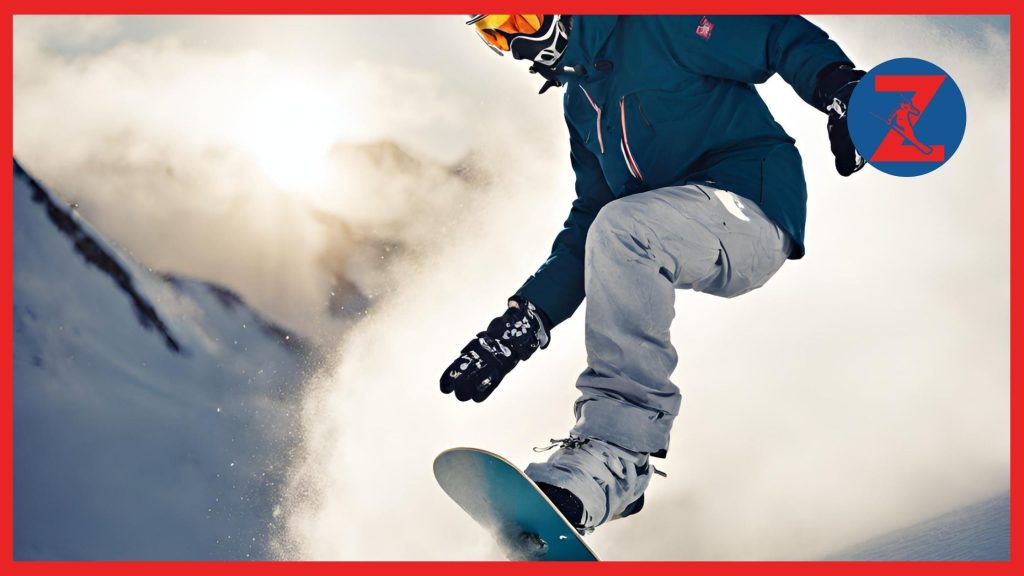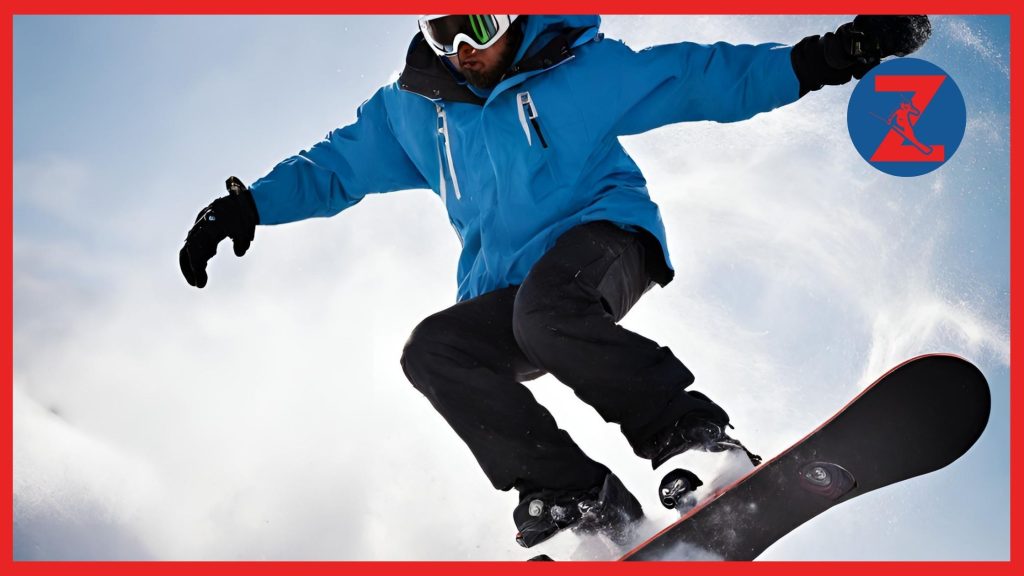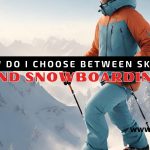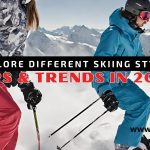Are you ready for an adrenaline-fueled adventure that will make your heart race and your spirit soar? Look no further than the exhilarating world of snowboarding! Whether you’re a seasoned shredder or a curious beginner, the snowboarding sport offers an unmatched thrill that will keep you coming back for more. So, grab your board and join us as we dive into the captivating world of snowboarding, where every slope holds a new adventure and every turn is a chance to defy gravity.
Exploring the Best Snowboarding Locations

When it comes to snowboarding, choosing the right location can make all the difference in your experience. The United States boasts some of the best snowboarding destinations in the world. From breathtaking mountain ranges to world-class resorts, these locations offer a myriad of opportunities for snowboarders of all skill levels to carve up the slopes.
1. Lake Tahoe, California
A true snowboarding paradise, Lake Tahoe is renowned for its stunning natural beauty and abundance of snowfall. With multiple resorts such as Heavenly, Squaw Valley, and Northstar, riders can explore a variety of terrains, from perfectly groomed runs to challenging backcountry areas. Additionally, the vibrant après-ski scene and jaw-dropping alpine views make Lake Tahoe an unforgettable snowboarding destination.
2. Vail, Colorado
Vail is a world-class snowboarding destination that offers a vast and diverse terrain. With over 5,200 skiable acres and legendary back bowls, Vail caters to riders of all abilities. Whether you’re a beginner looking to learn or an expert seeking thrilling challenges, Vail guarantees an exhilarating snowboarding experience. Plus, the cozy mountain village atmosphere and top-notch amenities make Vail the ultimate winter getaway.
3. Jackson Hole, Wyoming
Known for its steep and challenging terrain, Jackson Hole is a dream come true for adrenaline-seeking snowboarders. With its legendary runs like Corbet’s Couloir and expansive backcountry access, Jackson Hole offers a true big mountain experience. The breathtaking Teton scenery and vibrant western charm add to the allure of this incredible snowboarding destination.
4. Mount Baker, Washington
If you’re searching for epic powder and a laid-back atmosphere, look no further than Mount Baker. This hidden gem in Washington state holds the world record for the greatest snowfall in a single season, offering unrivaled snowboarding conditions. With its challenging steeps and untouched powder stashes, Mount Baker attracts passionate snowboarders seeking a raw and authentic experience.
5. Park City, Utah
Park City, nestled in the stunning Wasatch Mountains, combines world-class snowboarding with a vibrant après-ski scene. As the host of the 2002 Winter Olympics, Park City offers top-notch facilities and meticulously groomed runs. With three ski resorts to choose from, including Park City Mountain Resort and Deer Valley Resort, riders can explore a variety of terrain and enjoy the picturesque surroundings.
| Location | Key Features |
|---|---|
| Lake Tahoe, California | Breathtaking beauty, abundance of snowfall, multiple resorts |
| Vail, Colorado | World-class resort, diverse terrain, top-notch amenities |
| Jackson Hole, Wyoming | Steep and challenging terrain, expansive backcountry access |
| Mount Baker, Washington | Epic powder, laid-back atmosphere, untouched snow |
| Park City, Utah | Beautiful surroundings, vibrant après-ski scene, variety of terrain |
Essential Snowboarding Gear for a Thrilling Ride
To have a thrilling and safe snowboarding adventure, it’s crucial to have the right equipment. Proper snowboard equipment not only enhances performance but also ensures utmost comfort and protection on the slopes. Whether you are a beginner or an advanced rider, investing in quality snowboarding gear is essential for an exhilarating experience.
1. Snowboard
The snowboard is the centerpiece of your snowboarding gear. It’s important to choose a snowboard that suits your riding style, skill level, and terrain preferences. There are various types of snowboards available, such as all-mountain, freestyle, and powder boards, each designed for specific riding conditions. Research different brands, models, and sizes to find the perfect snowboard for your needs.
2. Bindings
Bindings are the crucial link between your boots and the snowboard. They provide control, responsiveness, and support while riding. Make sure to choose bindings that are compatible with your boots and allow for easy adjustments to achieve the desired stance and angles. Look for bindings that offer a balance between flexibility and stability to suit your riding style.
3. Boots
When it comes to snowboarding boots, comfort is key. Your boots should fit snugly without being too tight or too loose. They should provide good ankle support and have a solid sole for better board control. Consider the type of riding you plan to do, as different boots are designed for different terrain and riding styles. Take the time to try on different brands and models to find the right fit.
4. Protective Gear
Safety should always be a top priority when snowboarding. Protective gear such as helmets, goggles, and wrist guards are essential for preventing injuries. A well-fitting helmet can protect your head from impacts and reduce the risk of serious head injuries. Goggles shield your eyes from snow glare and debris, while wrist guards provide support and help prevent wrist injuries during falls.
5. Layered Clothing
Layered clothing is essential for regulating body temperature and staying comfortable on the slopes. A moisture-wicking base layer helps keep you dry by pulling sweat away from your body. A thermal mid-layer provides insulation and warmth. Finally, a waterproof and breathable outer layer protects you from the elements. Don’t forget to wear proper snowboarding socks and gloves for added comfort.
“Investing in high-quality snowboarding gear is like investing in your own safety and performance. Having the right gear ensures that you can fully enjoy the thrill of snowboarding while staying protected on the slopes.”
By investing in the right snowboarding gear, you can have a thrilling and safe ride while pushing your limits on the slopes. Remember to regularly check and maintain your gear to ensure optimal performance and safety. With the right equipment, you’ll be ready to carve up the mountain and experience the excitement of snowboarding to its fullest!
Mastering Snowboarding Techniques and Tricks

When it comes to snowboarding, mastering the right techniques and tricks can take your skills and style to the next level. Whether you’re a beginner or an experienced rider looking to add some flair to your runs, learning new tricks can enhance your snowboarding experience. Here are some essential techniques and tricks to help you improve your snowboarding abilities:
Carving
Carving is a fundamental technique that involves using your board’s edges to make precise turns. To carve effectively, shift your weight onto your toes or heels, engage your edges, and lean into the turn. This technique allows you to maintain control and speed while navigating different terrains.
Ollie
The ollie is a versatile trick that involves jumping with your snowboard. To perform an ollie, shift your weight onto your tail, pop off the tail, and use your front foot to level out the board in the air. This trick can help you navigate jumps, obstacles, and perform stylish maneuvers.
Butter
Buttering is a stylish trick that involves pressing the board into the snow while performing various movements. By shifting your weight and applying pressure, you can create smooth and flowing transitions from one edge to another. Butters add creativity and fluidity to your riding style.
180s and 360s
Spinning tricks like 180s and 360s require rotational control and spatial awareness. Start by practicing on small jumps or rollers, rotating your body and board in the desired direction. As you gain confidence, you can attempt more advanced spins, combining your body and board’s movements for seamless rotations.
Grabs
Grab tricks involve reaching down and grabbing the board while in the air. There are various grab options, including indy, mute, method, and tailgrabs. Grabs not only add style to your jumps but also improve your stability and control while airborne.
Rails and Boxes
Riding rails and boxes require precise balance and coordination. Start with smaller features and gradually progress to larger ones as you gain confidence. Approach the feature with enough speed, keeping your board parallel to the rail or box. Use your body’s movements to maintain stability and execute stylish slides.
Inverts
Invert tricks involve going upside down while in the air. These advanced tricks require proper training and guidance. It’s crucial to learn them under the supervision of experienced coaches or at dedicated training facilities with proper safety measures in place.
Dressing up for the Slopes – Snowboarding Apparel
When it comes to snowboarding, having the right apparel is just as important as owning a reliable snowboard. Choosing the appropriate clothing and accessories not only keeps you warm and dry on the slopes but also ensures your safety and enhances your performance. Whether you’re a seasoned pro or a beginner, dressing up in proper snowboarding apparel is essential for an enjoyable and stylish experience.
Stay Dry with Waterproof Outerwear
One of the key elements of snowboarding apparel is waterproof outerwear that keeps you dry and protected from the snow and moisture. Opt for a snowboarding jacket made with a waterproof and breathable material, such as Gore-Tex, to ensure ultimate comfort and performance on the slopes.
Look for jackets with taped seams and adjustable hoods to keep the snow out and trap the warmth inside. Consider the jacket’s ventilation system, such as underarm vents, to regulate your body temperature during intense rides. Pair your jacket with waterproof gloves or mittens to keep your hands warm and dry throughout the day.
Accessorize with Style
Just because you’re focused on functionality and safety doesn’t mean you can’t dress stylishly on the slopes. Accessorize your snowboarding ensemble with trendy and functional items. A stylish beanie or helmet cover not only keeps your head warm but also adds a touch of personality to your look.
Complete your outfit with a versatile neck gaiter or a snood that can protect your face from the cold wind and sunburn. Don’t forget to wear high-quality, moisture-wicking gloves or mittens that allow you to use your phone without taking them off. And finally, choose a backpack or a snowboarding-specific gear bag that offers storage space for your essentials, such as snacks, water, and spare goggles.Snowboarding isn’t just a sport; it’s a fashion statement. By dressing up in the right snowboarding apparel, you can hit the slopes with confidence, style, and optimal performance.
A Beginner’s Guide to Snowboarding

If you’re new to the world of snowboarding, you’re in for an exhilarating adventure! This beginner’s guide will equip you with the essential techniques, safety tips, and advice you need to get started in this exciting sport. Whether you’re looking to conquer the slopes or simply enjoy the thrill of gliding through fresh powder, this guide has got you covered.
Essential Techniques
Before hitting the slopes, it’s crucial to master a few fundamental snowboarding techniques. Start by familiarizing yourself with proper stance and balance. Position your feet perpendicular to the snowboard, shoulder-width apart, with your toes slightly angled outward.
When it comes to turning, carving is a fundamental skill to learn. This technique allows you to control your speed and navigate the mountain smoothly. To carve, shift your weight from the edge of the board to initiate the turn, applying pressure with your toes or heels as needed.
Another important technique for beginners is the heel-side and toe-side traverse. This maneuver involves traversing the slope on your heel edge or toe edge, which helps build confidence and control.
Safety Tips
- Always wear a helmet: Protect your head and reduce the risk of injury by wearing a properly fitted helmet.
- Choose the right gear: Invest in quality snowboarding equipment, including a well-fitted snowboard, bindings, boots, and appropriate clothing.
- Warm up and stretch: Before hitting the slopes, take the time to warm up your muscles and stretch to prevent strains and injuries.
- Know your limits: Start with easy slopes and gradually progress to more challenging ones as you build your skills and confidence.
- Stay hydrated and fuel your body: Snowboarding can be physically demanding, so drink plenty of water and fuel up with nutritious snacks throughout the day.
- Be aware of your surroundings: Always stay alert and aware of other skiers and snowboarders on the mountain. Observe posted signs and respect the mountain rules.
Getting Started
To begin your snowboarding journey, consider taking lessons from a certified instructor. They will teach you proper technique, safety guidelines, and help you progress faster. Additionally, practicing on beginner-friendly slopes and starting with shorter sessions can help you gradually build your skills without overwhelming yourself.
Remember, snowboarding is all about enjoying the experience and immersing yourself in the beauty of the mountains. Don’t be discouraged by falls or initial challenges. With practice and perseverance, you’ll soon be riding like a pro!
Safety First – Snowboarding Safety Tips

When it comes to snowboarding, safety should always be a top priority. Whether you’re a beginner or an experienced rider, following these snowboarding safety tips will help ensure a safe and enjoyable experience on the slopes.
1. Use Proper Equipment
Investing in high-quality snowboarding gear is essential for your safety. Make sure to wear a well-fitting helmet, goggles to protect your eyes, wrist guards, and proper snowboarding boots with the appropriate bindings.
2. Warm Up and Stretch
Before hitting the slopes, take the time to warm up your muscles and stretch. This will help prevent injuries and enhance your performance while snowboarding.
3. Know the Mountain Etiquette
Understanding and following the mountain etiquette is crucial for everyone’s safety on the slopes. Respect the right of way, always yield to other riders, and be aware of your surroundings.
4. Stay Within Your Skill Level
It’s important to know your limits as a snowboarder and stick to slopes that match your skill level. Taking on challenging terrain beyond your abilities can lead to accidents and injuries.
5. Be Aware of Avalanches
If you plan on venturing into backcountry snowboarding, make sure to educate yourself about avalanche safety. Carry the necessary avalanche safety gear and be familiar with how to use it.
6. Stay Hydrated and Fuel Up
Drink plenty of water and eat nutritious meals throughout the day to keep your energy levels up and prevent fatigue. Snowboarding requires physical exertion, and proper hydration and nutrition are vital for your safety.
7. Know the Weather Conditions
Keep yourself updated on the current weather conditions and any potential risks before heading out to snowboard. Be prepared for changing weather and adjust your plans accordingly.
“Snowboarding safety tips are not meant to limit your fun but to enhance your overall experience. It is important to prioritize safety on the slopes to ensure that you can enjoy the thrill of snowboarding for years to come.”
8. Take Lessons and Improving Technique
Even experienced snowboarders can benefit from taking lessons or refining their technique. Professionals can provide valuable tips and guidance to help you ride safely and improve your skills.
9. Carry a First Aid Kit
Accidents happen, so it’s always a good idea to have a basic first aid kit with you. Include items such as bandages, pain relief medication, and any personal medications you may need.
10. Stay in Communication
Inform someone about your snowboarding plans and make sure to have a fully charged phone with you. Having a means of communication is essential in case of emergencies or if you need assistance.
11. Follow Resort Rules and Regulations
Every resort has its own rules and regulations. Familiarize yourself with these guidelines and always follow them to ensure the safety of yourself and others.
12. Respect the Environment
Keep the mountain clean and respect the environment while snowboarding. Dispose of trash properly and be mindful of wildlife and sensitive natural areas.
By following these snowboarding safety tips, you can minimize the risk of accidents and injuries and fully enjoy the exhilaration of the sport.
Enhancing Performance with the Right Snowboarding Advancements

When it comes to snowboarding, having the right gear can make all the difference in enhancing your performance on the mountain. The advancements in snowboarding gear and equipment have revolutionized the sport, providing snowboarders with the tools they need to take their riding to the next level.
From cutting-edge technologies to innovative materials, snowboarding gear has evolved to optimize comfort, control, and safety. Let’s take a closer look at some of the latest advancements in snowboarding gear and how they can enhance your snowboarding experience.
1. High-Performance Snowboards
Choose the right snowboard is crucial for maximizing your performance on the slopes. Manufacturers like Burton, Lib Tech, and GNU have been at the forefront of developing high-performance snowboards that cater to different riding styles and skill levels. These boards are designed with advanced construction techniques, responsive flex patterns, and optimized shapes to provide optimal stability, control, and maneuverability.
2. Intuitive and Adjustable Bindings
Bindings play a crucial role in translating your movements to the snowboard. The latest bindings feature innovative designs that improve response and comfort. Look for adjustable bindings that allow you to customize the fit, flex, and position for a personalized riding experience. Brands like Union, Ride, and Flux are known for their high-quality bindings that offer excellent performance and durability.
3. Responsive and Comfortable Boots
Your snowboarding boots are your connection to the board, so it’s essential to choose boots that provide a perfect balance between response and comfort. Brands like Burton, ThirtyTwo, and Salomon have incorporated advanced materials and designs into their boots to enhance performance while ensuring foot stability, warmth, and support. Look for boots with features like heat-moldable liners and dual-zone lacing systems for customizable fit and support.
4. Protective Gear for Safety
Safety is paramount in snowboarding, and advancements in protective gear have made it easier than ever to stay safe on the slopes. Helmets are now lightweight, ventilated, and feature advanced impact protection technologies. Brands like Smith, Giro, and Bern offer a wide range of helmets that combine style and safety. Additionally, impact-absorbing padding and armor in jackets and pants provide excellent protection without sacrificing mobility or style.
5. Innovative Accessories
Alongside the essential snowboarding gear, many innovative accessories can further enhance your performance and comfort on the mountain. These include high-quality goggles with advanced lens technologies for improved visibility in varying light conditions, wrist guards for added protection, and specialized socks that provide warmth and moisture-wicking properties.
By staying updated with the latest advancements in snowboarding gear, you can ensure that you are equipped with the tools to push your limits and elevate your snowboarding experience. Remember to choose gear that suits your riding style, experience level, and personal preferences. With the right gear, you can feel confident and inspired as you carve your way down the slopes.
Exploring Different Snowboarding Styles and Subcultures
Within the thrilling world of snowboarding, there are various styles and subcultures that cater to the diverse preferences and passions of riders. These styles not only showcase different techniques and approaches but also foster unique subcultures that bring together like-minded individuals who share a love for this exhilarating sport.
One of the most popular snowboarding styles is freestyle. This style focuses on creativity and expression, with riders performing tricks and jumps off natural and man-made features in terrain parks. From jaw-dropping spins and grabs to stylish rail slides, freestyle snowboarding pushes the boundaries of what is possible on a snowboard.
For those seeking a more adventurous and adrenaline-pumping experience, freeride snowboarding is the way to go. This style involves exploring ungroomed terrains, such as powder-filled backcountry or challenging off-piste areas of the mountain. It’s all about finding untouched lines, navigating through trees, and enjoying the natural beauty of the snow-covered landscapes.
Backcountry snowboarding, in particular, offers a raw and unfiltered connection with nature, where riders venture far beyond the confines of resorts and explore untamed wilderness.
“Backcountry snowboarding takes you to places that few have experienced. It’s a humbling and awe-inspiring journey where you’re immersed in the vastness of the mountains, relying on your skills and instincts to conquer untouched terrain.” – Jane Davis, professional snowboarder.
Aside from the different styles, snowboarding subcultures also emerge, each with its own unique characteristics and communities. These subcultures foster a sense of camaraderie and belonging, where riders can connect and support one another in their shared passion.
Whether it’s the bohemian and free-spirited vibe of the park riders, the thrill-seeking adrenaline junkies of the backcountry, or the laid-back and soulful atmosphere of the freeride enthusiasts, each subculture adds an extra layer of depth and individuality to the snowboarding community.
Snowboarding Style Comparison
| Style | Focus | Key Features |
|---|---|---|
| Freestyle | Creativity and Expression | Terrain parks, jumps, tricks, rail slides |
| Freeride | Adventurous Exploration | Ungroomed terrains, powder, off-piste, backcountry |
Whichever style or subculture resonates with you, snowboarding is a sport that fosters a deep connection with nature and an incredible sense of freedom. It’s a playground where riders can push their limits, express their individuality, and find true joy in the seamless dance between their boards and the mountain slopes.
Conclusion
After exploring the thrilling world of snowboarding, it’s clear that this sport offers an incredible adventure for enthusiasts of all levels. From the adrenaline rush of hitting the slopes to the mastery of techniques and tricks, snowboarding provides endless opportunities for excitement and self-expression.
We’ve covered the best snowboarding locations in the United States, showcasing resorts and mountains that offer breathtaking experiences. Whether you’re drawn to the powder of Aspen or the steep slopes of Mammoth Mountain, there’s a destination that will suit your style and preferences.
Equipping yourself with the right gear is essential for a safe and enjoyable snowboarding experience. From choosing the perfect snowboard and bindings to wearing appropriate apparel for the conditions, we’ve provided valuable advice to ensure you’re ready for every ride.
Now that you have a beginner’s guide, safety tips, and insights into snowboarding styles and subcultures, it’s time to grab your gear and hit the slopes. Whether you’re a beginner or an experienced rider, the fresh thrills of snowboarding await you. Begin your snowboarding journey, and let the mountain be your playground!
FAQ
Q: What is snowboarding sport?
A: Snowboarding is a winter sport that involves descending a snow-covered slope on a snowboard. It combines elements of surfing, skateboarding, and skiing to create an exhilarating and dynamic experience on the slopes.
Q: Where are the best snowboarding locations?
A: Some of the best snowboarding locations can be found in popular resorts and mountains across the United States. Some top destinations include Aspen Snowmass in Colorado, Mammoth Mountain in California, and Park City Mountain Resort in Utah.
Q: What gear do I need for snowboarding?
A: To go snowboarding, you will need essential gear such as a snowboard, bindings, boots, and protective gear like a helmet and goggles. It is important to invest in high-quality and properly fitting equipment that suits your skill level and riding style.
Q: What are some snowboarding techniques and tricks?
A: Snowboarding offers a wide range of techniques and tricks for riders to learn and master. Some popular tricks include grabs, spins, and flips, while techniques like carving, buttering, and jibbing can enhance overall riding style and control.
Q: What should I wear while snowboarding?
A: When snowboarding, it is important to wear appropriate snowboarding apparel. This includes waterproof and insulated clothing like jackets and pants, as well as base layers, gloves, and sturdy boots. Dressing in layers allows for easy temperature regulation.
Q: How can I start snowboarding as a beginner?
A: As a beginner, it is recommended to take lessons from a qualified instructor to learn the basic techniques and safety guidelines. It is also important to start on gentle slopes and gradually progress to more challenging terrain as your skills improve.
Q: What are some snowboarding safety tips?
A: Safety should be a top priority when snowboarding. Some important safety tips include wearing appropriate protective gear, following mountain rules and etiquette, staying within your skill level, keeping aware of your surroundings, and being mindful of weather conditions.
Q: What advancements have been made in snowboarding gear?
A: Snowboarding gear has seen numerous advancements in recent years. This includes the development of lighter and more responsive snowboards, advanced binding systems, innovative boot technologies, and specialized gear accessories like action cameras and heated clothing.
Q: How can I stay fit for snowboarding?
A: Staying physically fit is essential for snowboarding. Regular strength training, flexibility exercises, and cardiovascular workouts can help improve your endurance, balance, and overall performance on the slopes. It is also beneficial to incorporate exercises that target the specific muscles used in snowboarding.
Q: What are the different snowboarding styles and subcultures?
A: Snowboarding encompasses various styles and subcultures. Freestyle snowboarding involves tricks and jumps in terrain parks, while freeride focuses on exploring ungroomed slopes. Backcountry snowboarding involves riding in remote and unpatrolled areas, often using splitboards to access untouched powder.






